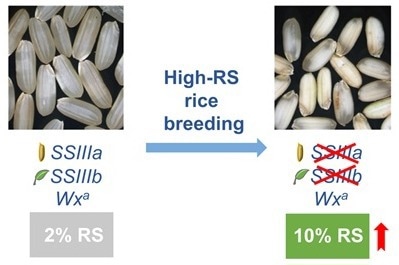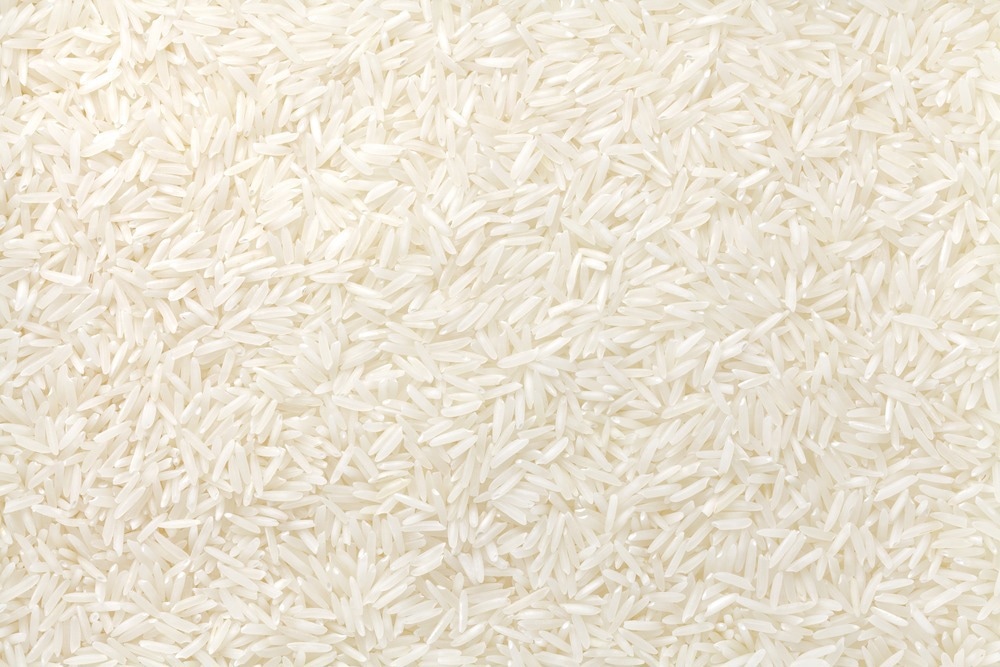Reviewed by Danielle Ellis, B.Sc.May 8 2023
Researchers have demonstrated that the loss of function of two paralogous starch biosynthesis genes increases the amount of resistant starch (RS) in cooked rice. This knowledge sheds light on how high-RS types of rice and probably other cereals are produced.
 Model of high-RS rice breeding through deficiency of SSIIIa and SSIIIb. Image Credit: IGDB
Model of high-RS rice breeding through deficiency of SSIIIa and SSIIIb. Image Credit: IGDB
This investigation was carried out by the teams of professors Jiayang Li from the Chinese Academy of Sciences’ Institute of Genetics and Developmental Biology (IGDB) and Dianxing Wu from Zhejiang University, and it was released online on May 1st, 2023 in PNAS.
Obesity, type 2 diabetes, and associated comorbidities are all caused by sedentary lifestyles and chronic overeating, and they pose a danger to the health of everyone on the planet. By managing glucose homeostasis, its incidence can be lowered with suitable dietary measures.

Image Credit: matin/Shutterstock.com
As opposed to rapidly digested starch, RS is a special kind of starch that is transferred to the large intestine for slow fermentation instead of being digested in the small intestine. This promotes intestinal health and may help with several related conditions, including inflammatory bowel disease, insulin resistance, type 2 diabetes, and weight management.
Although rice is a fantastic source of carbohydrates, most cooked rice only had minimal amounts of RS (<2%). Therefore, finding novel RS genes has significant theoretical and practical implications for enhancing rice’s nutritional value.
SSIIIa is a high-RS gene that was originally identified by the teams of Li and Wu. In the loss-of-function ssIIIa mutant with a Wxa allele in the indica rice background, the RS content rose to about 6%. Even though SSIIIa and Wx helped the RS develop, more useful RS genes were still required.
The researchers employed a high-RS mutant rs4 (~10% RS content) produced by physical mutagenesis in light of this. They discovered a novel high RS gene, SSIIIb, that carries a frame-shift mutation in the rs4 mutant in addition to the SSIIIa deficit by genetic research, resequencing, and cloning of the segregating population.
When ssIIIb pyramided with ssIIIa to create the double mutant ssIIIa ssIIIb, RS levels in the indica rice background climbed to 10%. They discovered that the ssIIIb single mutation did not influence RS levels. Increased amylose and lipid levels were linked to elevated RS levels in the ssIIIa and ssIIIa ssIIIb mutants.
The researchers also demonstrated that SSIIIb and SSIIIa proteins originate from paralogous genes of the rice SSIII family. However, due to their diverging tissue-specific expression patterns, SSIIIb acts primarily in leaves and SSIIIa primarily in the endosperm.
In many kinds of cereals, the SSIII gene experienced gene duplication, with one SSIII paralog mostly expressed in the endosperm and the other in the leaves.
Similar to SSIII, SSII displayed an evolutionary trend. In contrast to low total starch and high RS levels in the seeds of tested dicots, duplication of SSIII and SSII was related to high total starch and low RS levels in the seeds of tested cereals.
Important genetic resources for breeding high-RS rice varieties are provided by these findings, and the evolutionary traits of these genes could make it easier to produce high-RS variants in other cereals.
Source:
Journal reference:
Wang, A., et al. (2023). Loss of function of SSIIIa and SSIIIb coordinately confers high RS content in cooked rice. PNAS. doi.org/10.1073/pnas.2220622120